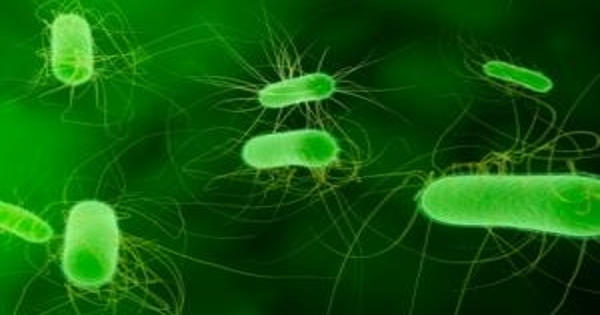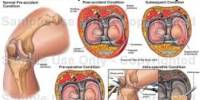Vitamin D
Definition
Vitamin D is a steroid vitamin, which promotes the intestinal absorption and metabolism of calcium and phosphorus. Under normal conditions of sunlight exposure, no dietary supplementation is necessary because sunlight promotes adequate vitamin D synthesis in the skin. Deficiency can lead to bone deformity (rickets) in children and bone weakness (osteomalacia) in adults. It refers to a group of fat-soluble secosteroids responsible for increasing intestinal absorption of calcium, iron, magnesium, phosphate, and zinc.
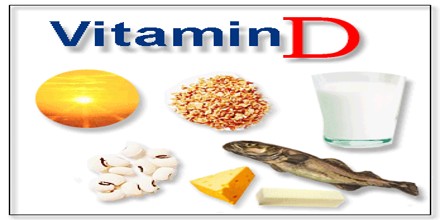
Vitamin D is important for good overall health and strong and healthy bones. It’s also an important factor in making sure your muscles, heart, lungs and brain work well and that our body can fight infection. Our body can make its own vitamin D from sunlight. We can also get vitamin D from supplements and a very small amount comes from a few foods we eat.
Vitamin D from supplements has to be changed by our body a number of times before it can be used. Once it’s ready, our body uses it to manage the amount of calcium in our blood, bones and gut and to help cells all over our body to communicate properly.
The link between vitamin D and strong healthy bones was made many years ago when doctors realized that sunlight, which allows us to produce vitamin D, or taking cod liver oil, which contains vitamin D, helped to prevent a bone condition called rickets in children. Today, vitamin D is seen as a vital part of good health and it’s important not just for the health of our bones. Recent research is now showing that vitamin D may be important in preventing and treating a number of serious long term health problems. Calcium and phosphorus are essential for developing the structure and strength of our bones, and we need vitamin D to absorb these minerals. Vitamin D is important for general good health, and researchers now are discovering that vitamin D may be important for many other reasons outside of good bone health. Some of the functions of the body that vitamin D helps with includes:

- Immune system, which helps us to fight infection
- Muscle function
- Cardiovascular function, for a healthy heart and circulation
- Respiratory system –for healthy lungs and airways
- Brain development
- Anti-cancer effects
Functions of Vitamin D
The function of vitamin D that is most clearly understood is its role in calcium metabolism. However, there is evidence for emerging roles that have implications for health and prevention of various diseases.
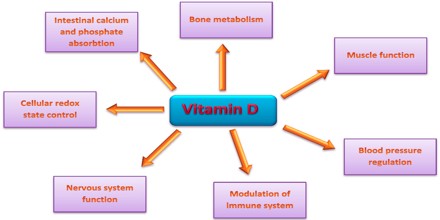
When blood levels of calcium fall, parathyroid hormone (PTH) is released to promote hydroxylation of 25(OH) D to its active form 1, 25 (OH) 2D. Both PTH and 1, 25 (OH) 2D mobilize calcium from bone and enhance absorption of calcium from the intestine and kidneys.
Vitamin D in its active form also has the capacity to modify cellular activity, cell differentiation and cell proliferation, and therefore may have many roles in physiology and health. Vitamin D receptors have been reported in all tissues including: immune system, brain, heart, pancreas, and intestine, suggesting a role in these tissues. This may explain its association in a wide variety of conditions such as type 1 and type 2 diabetes, multiple sclerosis, schizophrenia, and some cancers.
Types of Vitamin D
There are two major types of vitamin D:
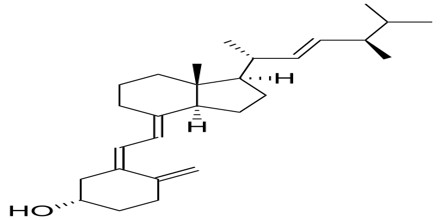
Vitamin D2 (ergocalciferol) – which is synthesized by plants and is not produced by the human body. A white crystalline sterol produced by ultraviolet irradiation of ergosterol and also occurring naturally in fungi and some fish oils. Vitamin D2 is the form of vitamin D generally used as a dietary supplement. Also called calciferol, ergocalciferol. Chemical formula: C28H44O.

Vitamin D3 (cholecalciferol) – which is made in large quantities in the skin when sunlight strikes bare skin. It can also be ingested from animal sources. A colorless, crystalline steroid hormone that the body synthesizes in the skin when its precursor, a derivative of cholesterol, is irradiated by sunlight. Vitamin D3 is also found in fish-liver oils, irradiated milk, and all irradiated animal foodstuffs. Also called calciferol, cholecalciferol. Chemical formula: C27H44O.
Chemically, the various forms of vitamin D are secosteroids, i.e., steroids in which one of the bonds in the steroid rings is broken. The structural difference between vitamin D2 and vitamin D3 is the side chain of D2 contains a double bond between carbons 22 and 23, and a methyl group on carbon 24.
In the liver, cholecalciferol (vitamin D3) is converted to calcifediol. Ergocalciferol (vitamin D2) is converted in the liver to 25-hydroxyergocalciferol (a.k.a. 25-hydroxyvitamin D2 — abbreviated 25(OH)D2). These two specific vitamin D metabolites are measured in serum to determine a person’s vitamin D status. Part of the calcifediol is converted by the kidneys to calcitriol, the biologically active form of vitamin D. Calcitriol circulates as a hormone in the blood, regulating the concentration of calcium and phosphate in the bloodstream and promoting the healthy growth and remodeling of bone. Calcitriol also affects neuromuscular and immune function.



